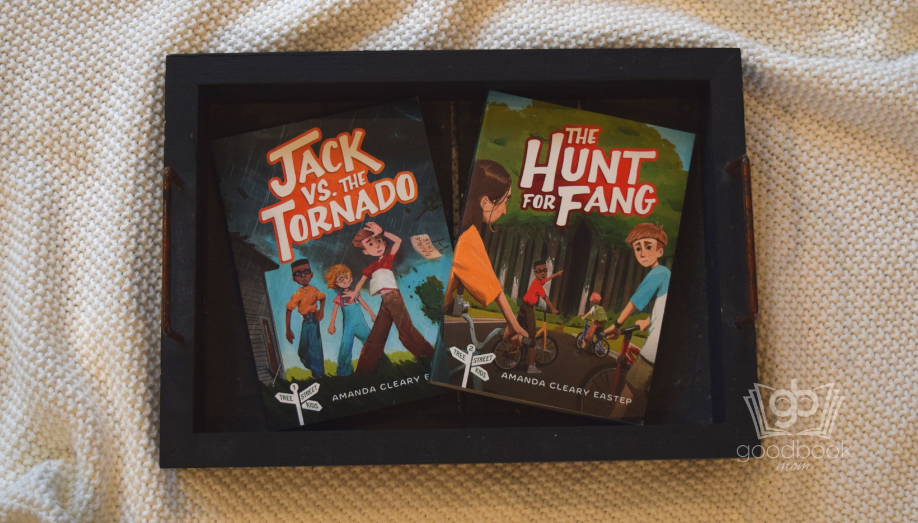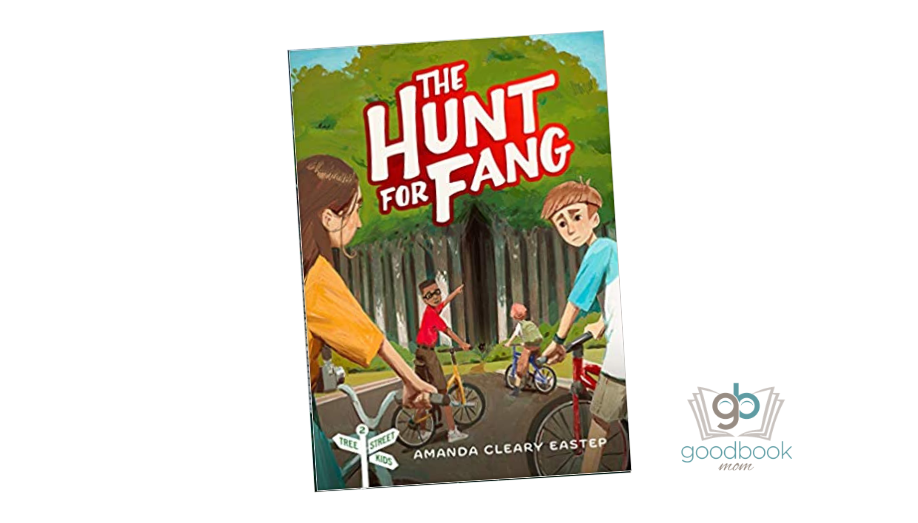
Summary
During the 1990s, Jack moves from his grandparents’ farm to the suburbs with his mom, dad, and little sister, Midge. He is very upset about having to leave the home he loves and does not want to get attached to anyone near his suburban house. His goal is to make enough money over the summer to help pay off his grandparents’ farm so he can move back in the fall.
Some neighbor kids, Ellison, Ruthie, and Roger, want Jack to be the leader of their group, “The Tree Street Kids,” but Jack resists. While doing chores to make some money, Jack discovers a strange bump in his neighbor’s yard and all the kids investigate. After getting the neighbor, Mr. Bruno, onboard, they discover an old, underground bomb shelter, which becomes their clubhouse. After his grandparents’ barn is destroyed in a storm, Jack realizes that he can make a new home in the suburbs with his great friends.
In the second book, Jack desires a dog and suddenly a stray appears! They take the dog home and search for the owner. Jack and the Tree Street Kids head off to church day camp to learn survival skills, which Jack didn’t realize may also include surviving a bully named Buzz. After learning about God and wilderness survival, the Tree Street Kids have a real dilemma: Ruthie’s cat is missing and they think the coyote that has been wandering the neighborhood might have taken her. After searching the park reserve and finding no cat or coyote, Jack realizes that his little sister Midge has followed them and is now lost. He heads out alone to find her. Jack manages to find Midge, but while he is looking for her, he injures his ankle. The two have no choice but to spend the night in the woods.
When they are found in the morning, they get home and have to deal with the stray dog’s owner coming to take him away. After seeing how well he is loved there, the owner decides to leave the dog with Jack. Then, they discover Ruthie’s cat is in the underground clubhouse and had kittens!
Reading Level: Ages 8-12.
Read Aloud Age: 6+
Mom Thoughts
This series is relatable, fun, and filled with adventure. As an adult reading this book, it was enjoyable because it is set in the 90s and Jack is exactly my age. The author makes several cultural references that might be lost on an 8-12-year-old, but being my generation, I found it amusing. Jack’s character is very relatable and his situations, while a bit unlikely, are not unrealistic. It’s so refreshing to have a series that doesn’t involve any magic of any kind, just real-life events.
There are also many instances of Jack praying throughout these books and placing God in the story. For example: “Ellison read the verse Grandpa had carved into the door. “”By faith, he made his home in the promised land like a stranger in a foreign country.’ Abraham must have really trusted God. I suppose wherever he went, God was there too.” I hadn’t thought about that. God was with us in the middle of the cornfield. He had been with us in the bomb shelter. He was even with us in the suburbs. I also hadn’t thought about how I wasn’t the only one who had to move away…or the only one who had lost something in the tornado. I stared at the door. I’m sorry, I told God.”
There is a fair amount of brother and sister squabbling throughout both books. While you never question the love Midge and Jack have for each other, a significant back and forth goes on between them. I was also a bit confused by the addition of a Native American legend about a coyote being the one who brought people fire. There is a fair amount of talk about coyotes in the second book, but I felt as if this legend and how it was referenced later in the book actually took some of the praise away from God and gave it to a coyote instead for providing for Jack and Midge when they are lost in the woods.
They also mention ghosts in both books, never saying they are real, but they are referenced. A difficult subject is brought up in the second book when Ruthie reveals that the day she got her cat is also the day her mom left. It isn’t talked about often or in detail, but we know that Ruthie’s mom made a choice to leave, hasn’t been back, and Ruthie doesn’t know where she is.
Overall, this is a relatable series for kids that brings God into the narrative, but there are a couple of things you may want to address with your children before or after reading.
Language:
lucky, dumb, heck
Crude Humor: urping, arpit beans, stinky feet, suburps, goober formed a bubble
Name-calling: bratty sister, crook, drowned rat, dork, weirdos, skinny, sticky, Jack and Midge often take jabs at each other like saying something is too quiet to be a little sister
Questionable Behaviors:
Rolling eyes. Jack ignoring his sister. Midge punches Buzz the bully and there are no repercussions. Jack sometimes thinks slightly snarky things, like wondering if Buzz could do something with his mouth shut or silently celebrating when he beat Buzz at building a fire. Midge follows Jack into the woods, beyond where she is allowed and it is never addressed later.
Sexual Content:
Roger asks if someone is Jack’s “girrrl-friend.” Puberty is mentioned in passing.
Also Know:
Nazis are referenced a couple of times. Jack thinks his mom wants to be on a vacation without children. There is a reference to Goosebumps books.

Jack vs. the Tornado (#1)

The Hunt for Fang (#2)

